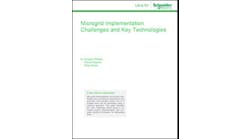“Boston Back Bay reflection” by Robbie Shade – Flickr: Boston’s Back Bay.
Massachusetts signaled today that its new administration plans to continue the state’s march into the world of microgrids and other disruptive energy tech with plans for a $10 million energy storage program.
The previous administration of Gov. Deval Patrick (D) helped make the state a green-energy leader, including maintaining a multiple-year top national ranking for energy efficiency. Since Patrick left office in January, energy industry insiders have been watching new Gov. Charlie Baker (R) for a sense of how he’ll model the state’s energy future.
What’s the plan? Baker says he wants Massachusetts to be a national leader in energy storage, which is often a key component of microgrids — in turn a key feature of disruptive energy tech.
The state wants to help develop demonstration projects of various kinds — projects that range in scope from the utility to residential.
“The Commonwealth’s plans for energy storage will allow the state to move toward establishing a mature local market for these technologies that will, in turn, benefit ratepayers and the local economy,” Baker said.
The state’s $10 million energy storage funding will come from the state’s alternative compliance payment, a charge to utilities and retail suppliers if they fail to meet renewable portfolio standards.
The Energy Storage Initiative (ESI) also will include two studies administered by the Department of Energy Resources (DOER) and the Massachusetts Clean Energy Center (MassCEC). The state is seeking proposals from consultants for the studies.
The first study will analyze the industry landscape, economic development and market opportunities for energy storage, along with potential policies and programs to support energy storage use. The second part of the study will provide policy and regulatory recommendations along with cost-benefit analysis for state policymakers.
Quotes from various state and energy leaders, which accompanied the announcement, signal that Massachusetts is determined to stay at the forefront of disruptive energy tech — even as tough competition emerges from nearby New York, with its Reforming the Energy Vision and NY Prize.
Alicia Barton, CEO of MassCEC, said that through the ESI Massachusetts “will position itself to grab a disproportionate share of the economic opportunities arising out of the fast growing global markets for storage technology.”
The worldwide market for grid-scale energy storage is estimated to reach $114 billion by 2017, according to Lux Research.
Matthew Beaton, the state’s secretary for energy and environment, said that the initiative will ensure Massachusetts “continues to be on the forefront of advancing innovative clean technology.
Through this initial $10 million announcement and the subsequent studies, Massachusetts is primed to leverage the expertise of the storage industry to reduce barriers to project implementation, and ultimately advancing a crucial component of modernizing our electric grid.”
DOER Commissioner Judith Judson announced the new initiative May 28 at the Energy Storage Association’s 25th Annual Conference on New Market Structures and Policy Enabling Storage.
Matt Roberts, executive director of the Energy Storage Association, described the state as playing “a leading role in creating solutions for a more flexible and resilient grid. These investments in studying the positive impact that energy storage will have and funding new projects will undoubtedly spur continued advancement in the industry.”
The ESI will build upon earlier state support for energy storage projects, including $13 million in projects featuring an energy storage component through DOER’s Community Clean Energy Resiliency Initiative.
Track news about Massachusetts $10M energy storage program by subscribing to the Microgrid Knowledge newsletter. It’s free.







